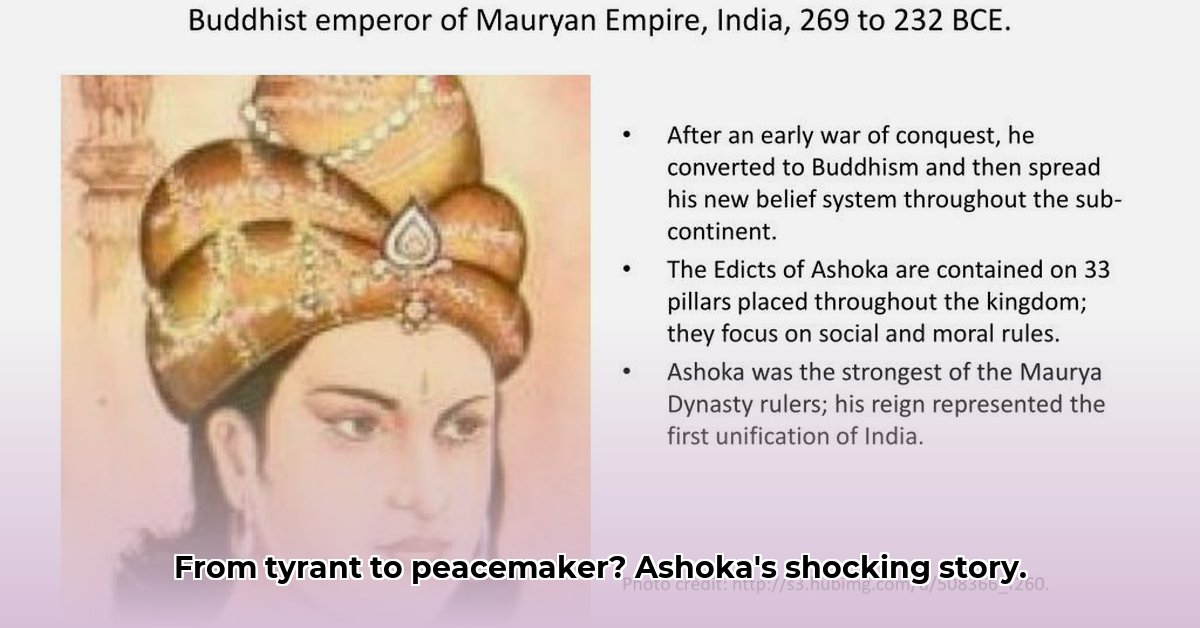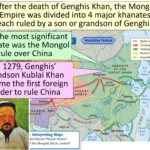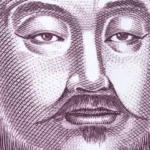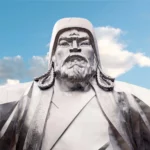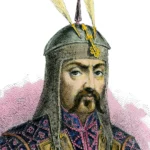Imagine a king who transformed from a ruthless conqueror to a champion of peace. That was Ashoka the Great. Ruling a vast empire in ancient India, he initially pursued brutal wars, most notably the Kalinga War. Discover Ashoka’s transformation, charting his journey from conquering lands to promoting peace through Dhamma. What drove Ashoka’s change of heart – a personal revelation, a smart political move, or something else? For comparison, consider the code of Hammurabi, another example of significant legal reform. For a deeper understanding of Hammurabi’s Code, see Hammurabi’s Code. For another perspective on early legal systems, see Hammurabi’s Law Code. For more context on ancient law, see Hammurabi’s Law. Learn more about Hammurabi’s Code here.
Ashoka the Great: The Indian Emperor Who Went From Tyrant to Buddhist Pacifist
Explore Ashoka’s legacy and reign.
Ashoka’s name echoes through history, synonymous with conquest and peace. He inherited the mighty Mauryan Empire, already vast, fueled by a desire for power realized through military campaigns. The seeds of his transformation were sown in the blood-soaked earth of a single, devastating battle.
The Kalinga War: A Bloody Crucible Forging a Changed Man
Understand the Kalinga War’s historical context.
The Kalinga War whispers of brutality. Picture the clash of armies, the screams of the dying – death and destruction on a massive scale. While the exact casualty figures are debated among scholars, estimates suggest over 100,000 were killed and 150,000 deported. This carnage shook Ashoka. He witnessed the horrors he unleashed, the suffering he caused. Was it a sudden realization of the futility of his violence, or a slower awakening as he surveyed the devastation? Ashoka was changed forever.
Before the Kalinga War, he was a warrior king, driven by conquest. Afterward, he was something more. Something different.
From Conquest to Compassion: Embracing Buddhism and the Path of Dhamma
Explore Buddhist philosophy and its influence.
Ashoka’s conversion to Buddhism revolutionized his worldview. He embraced Dhamma (a philosophy emphasizing non-violence, righteousness, and social harmony). Ashoka dedicated himself to building a society guided by these principles. He commissioned edicts—messages of peace inscribed on stone pillars across his kingdom. These edicts, written in local dialects, promoted concepts like non-violence and tolerance, and were disseminated across the Mauryan Empire.
A Legacy of Peace and Social Reform: More Than Just Words
Analyze the social reforms initiated by Emperor Ashoka.
Ashoka’s edicts reveal a man wrestling with his past, striving for the future, and committed to religious tolerance. He fostered acceptance of different faiths. He established hospitals and rest houses for people and animals. Was this pure altruism or a cunning political strategy aimed at consolidating power through benevolent rule? The motivations behind his actions add to his legacy. Ashoka also appointed Dhamma Mahamatras, officials dedicated to promoting social welfare and ethical conduct throughout his vast empire.
Some historians believe his transformation was a calculated political maneuver, a practical way to solidify his rule after Kalinga. Others think his change was spiritual, motivated by remorse and a desire for righteous governance. The truth likely lies somewhere between.
The Enduring Paradox: A Repentant Conqueror or a Masterful Ruler?
Understand differing historical interpretations.
Ashoka’s story remains a paradox. Was he genuinely repentant for his past actions, a conquering king transformed into a compassionate ruler? Or was he a strategist adapting his methods to achieve stability and control? Consider that his embrace of Dhamma coincided with a need to consolidate a sprawling empire and prevent further revolts.
Regardless of his underlying motives, Ashoka’s reign’s impact is undeniable. His legacy extends beyond his empire. The propagation of Buddhism significantly shaped religious and cultural landscapes for centuries. His commitment to peace continues to inspire ethical leaders.
Ongoing Research and Unanswered Questions
Explore recent historical findings on Ashoka.
Historians are delving into Ashoka’s life and reign. Sources are primarily from Buddhist accounts, accentuating his conversion. Further research may shed light on his pre-Kalinga cruelty and the timeline of his transformation. Was the transformation a sudden shift or a gradual evolution? Discoveries are still being made about the Mauryan Empire, including insights into Ashoka’s personal life and motivations.
The enduring questions surrounding Ashoka’s legacy fuel scholarly interest. His journey, from conqueror to champion of peace, remains a testament to human nature. The legacy of Ashoka the Great is one of continuous re-evaluation and debate.
How did Ashoka’s pre-Kalinga governance compare to his post-conversion policies?
Understand the distinct administrative changes.
Before the Kalinga War, Ashoka’s reign was characterized by aggressive expansionism, relentlessly pursuing conquests. Military might defined his early governance. His focus was on territorial expansion.
The Brutal Efficiency of a Conquerer
Examine the Emperor’s ruthlessly efficient early reign.
The Arthashastra (a treatise on statecraft), likely influenced Ashoka’s early policies. The Kalinga War proved a turning point. The carnage—estimates range into the hundreds of thousands—shocked him. Ashoka’s pre-Kalinga governance versus his post-conversion policies reveals a stark contrast. Prior to his transformation, Ashoka’s administration was centralized and focused on extracting resources to fund military campaigns.
The Emperor’s Transformation: A Shift in Priorities
Uncover Ashoka’s shift toward Buddhism.
The devastating Kalinga War profoundly altered Ashoka, resulting in a dramatic shift. The aggressive expansionism ended, replaced by a focus on internal development and moral reform. He adopted policies promoting non-violence, religious tolerance, and the well-being of his subjects.
Dharma and Governance: A New Era
Explore the integration of Dharma in governance.
Ashoka’s post-conversion policies focused on spreading the message of non-violence, tolerance, and social justice. His edicts detailed these reforms. He established a framework for ethical governance, appointing Dhamma Mahamatras (officials responsible for spreading his message of peace and implementing social welfare programs). This was a departure from his earlier actions.
Comparing and Contrasting Ashoka’s Reigns: A Tale of Two Eras
| Aspect | Pre-Kalinga Governance | Post-Kalinga Governance |
|---|---|---|
| Primary Focus | Military conquest, territorial expansion | Moral reform, social justice, Dhamma propagation |
| Methods | Military force, strategic alliances, ruthless efficiency | Moral persuasion, edicts, Dhamma Mahamatras |
| Foreign Policy | Aggressive expansion, assertion of power | Peaceful coexistence, promotion of cultural exchange |
| Internal Policy | Consolidation of power, suppression of dissent | Social welfare, promotion of religious tolerance |
| Key Guiding Principle | Arthashastra principles (realpolitik) | Buddhist principles (Dhamma) |
This table highlights the divergence in Ashoka’s governance following the Kalinga War, reflecting a profound alteration in his worldview.
The Lasting Impact: Ambitions Transformed
Analyze the lasting implications of his reign.
While some debate the authenticity of Ashoka’s conversion, the fact remains: his policies fundamentally changed after Kalinga, resulting in a significant social and political impact. From ruthless conqueror to advocate of peace and tolerance, Ashoka carved a unique path, both feared and revered. His story remains a case study in the intersection of political power and religious transformation. Did Ashoka’s shift away from the brutal efficiency outlined in the Arthashastra ultimately contribute to the Mauryan Empire’s decline after his death?
Key Takeaways:
- Ashoka’s pre-Kalinga reign was defined by expansion reflecting the strategic principles of the Arthashastra.
- The Kalinga War impacted Ashoka, transforming his governance.
- Post-conversion, his policies focused on non-violence, Dharma, and social welfare, evidenced by his edicts.
- Ashoka’s implementation of Dharma led to administrative reforms and the establishment of Dhamma Mahamatras.
- The depth and sincerity of Ashoka’s conversion remains a subject of debate.
Ashoka’s Edicts: Impact on Social Welfare in Ancient India
Explore the impact of Ashoka’s edicts on social welfare.
Before his conversion, Ashoka was a ruthless conqueror. The Kalinga War changed his life, pushing him towards compassion. This transformation manifested through his edicts. These edicts, inscribed on pillars and rocks throughout his empire, provide valuable insights into his policies and beliefs.
The Emperor’s Conversion and the Rise of Dhamma
Understand the transition.
Ashoka’s reign witnessed a transition. He abandoned expansion, embracing Dhamma (a philosophy emphasizing justice, and compassion). His edicts became his tools for societal transformation.
The Edicts: Tools of Governance and Social Reform
Analyze the edicts as social reform tools.
Ashoka’s Edicts promoted non-violence, animal welfare, and religious tolerance. Hospitals were established, and roads constructed to improve the lives of his subjects. Were these acts of altruism, or shrewd political maneuvers? Consider, for example, the establishment of medical facilities for both humans and animals, a progressive measure for its time.
Dissemination and Interpretation: A Multi-Lingual Message
Understand the use of multilingualism by Ashoka.
Ashoka understood the importance of communication. His edicts were inscribed in multiple languages reflecting the empire’s population. This reveals his ambition to reach every corner of his realm. By using Prakrit, the language of the common people, he ensured his message reached a wider audience.
A Lasting Legacy? Debating the Edicts’ Enduring Impact
Examine the enduring effects of the Edicts.
The edicts’ long-term impact remains debated among scholars. Did they foster changes in attitudes towards violence, religion, and social justice? How did these edicts shape the Mauryan society and its values? Some scholars argue that their influence was limited to Ashoka’s reign, while others believe they contributed to the long-term spread of Buddhist principles.
The Edicts in Perspective: A Complex Legacy
Appreciate the complexities of Ashoka’s legacy.
Understanding Ashoka’s Edicts requires acknowledging complexities. His transformation, shaped his rule, fostering a legacy of moral idealism and political pragmatism. Ashoka’s Edicts continue to be studied and analyzed, providing valuable insights into the history, culture, and governance during the Mauryan Empire.
Key Takeaways:
- Ashoka’s conversion and embrace of Dhamma altered his imperial governance.
- The Ashoka’s Edicts and their impact on Indian social welfare remains debated among historians.
- The edicts represent an attempt at large-scale social change.
- Their impact needs to be considered within its historical context.
- The edicts’ legacy extends beyond India, influencing governance and ethics.
Comparative Study of Mauryan Administration Before and After Ashoka’s Conversion
Analyze the differences in administration.
Before Ashoka, the Mauryan Empire was a tightly controlled machine. Chandragupta Maurya and Bindusara focused on expansion and consolidation of power prioritizing military might and tax collection. But was this structure sustainable? Consider the role of Kautilya, Chandragupta’s advisor, and his influence on the empire’s early administrative policies.
From Conquest to Compassion: A Shift in Governance
Understand the shift in governance.
Ashoka’s reign marked a turning point from the Kalinga War, and his conversion to Buddhism changed his approach to governance. This Comparative Study reveals a transformation. Instead of military prowess, Ashoka championed Dhamma.
A Comparative Look at Administrative Changes
Compare Mauryan administration before and after Ashoka.
Before Ashoka’s conversion, the Mauryan administration relied on spies to maintain control. Taxes were collected, fueling the empire’s expansion. The Arthashastra played a key role in guiding policy and strategy.
Ashoka’s edicts reveal a shift from strict enforcement to moral persuasion expanding to include social welfare projects. The appointment of Dhamma Mahamatras marked a significant change in the administrative structure.
Evaluating the Empire’s Trajectory
Analyze the long-term effects of Ashoka’s reforms.
The empire continued to be vast, but the means of its administration changed. Did his emphasis on morality reduce the need for overt military force? However, the empire eventually fragmented. The long-term effects of Ashoka’s policies on the Mauryan economy and social structure are complex and open to interpretation.
The Enduring Legacy
Appreciate the lasting influence of the Mauryan Empire.
Despite its fall, the Mauryan Empire left a mark on Indian history. Ashoka’s influence on Buddhism is undeniable. The Comparative Study reveals both administrative changes and long-term effects. Ultimately, the Mauryan experience offers lessons about the balance between power governance and social harmony. Ashoka’s emblem, the Lion Capital of Sarnath, is now the national emblem of India.
Key Takeaways:
- The Mauryan Empire under Chandragupta and Bindusara was centralized focused on expansion.
- Ashoka’s conversion to Buddhism altered the empire’s governance shifting from military might to Dhamma-based principles.
- A Comparative Study reveals a change in administrative emphasis from strict enforcement to moral suasion.
- The empire’s decline highlights the complexities of maintaining territories.
- Ashoka’s legacy continues to influence religious and political thought.
- The Shocking History of Lobotomy: A Nobel Prize Nightmare - August 1, 2025
- Eleanor Roosevelt: A Champion of Human Rights: Enduring Legacy - July 31, 2025
- The Great Emu War: Australia’s Bizarre Military Failure: 1932’s Unlikely Defeat - July 31, 2025
